2018 Ford Mustang GT review
While the new-for-2018 Mustang has a few more ponies under its hood, it's Ford's new 10-speed auto that's the talking...
When talking about their new seventh gen Mustang, Ford people use the word icon rather freely. But then it probably is, a nameplate that has been in continual production for 57 years, the Mustang is sold the world over and they’ve made more than 10 million of them. But while Mustang has many loyal fans, if Ford wants to keep the numbers rolling, they need to appeal to more people. Especially of the younger variety, because those boomers to who the Mustang was originally marketed to are now more likely to be in line for a hip replacement than a pony car with excess displacement.
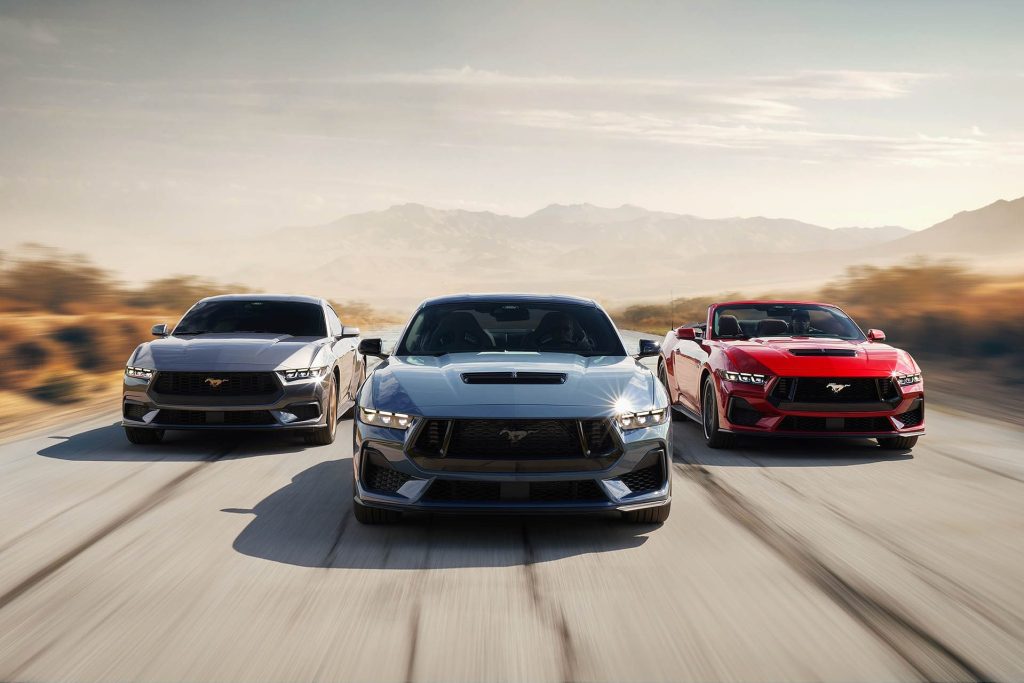
So Ford focused on the styling and technology for the new Mustang, with an emphasis on the latter to connect with the new generation of buyers. There’s more tech in the car, more screens, more digitisation and customisation.
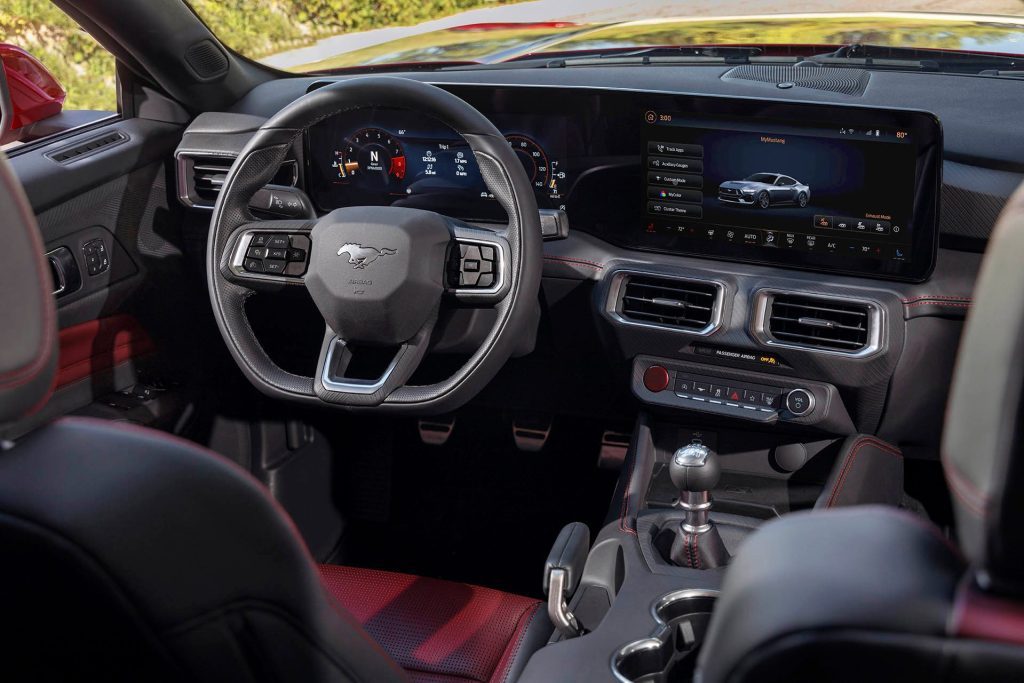
They call the styling theme ‘edgy’ and if you don’t like the look, blame the Millennials and the Gen Zers, it was them who liked the edgy design proposals in the customer clinics which Ford then put into production.
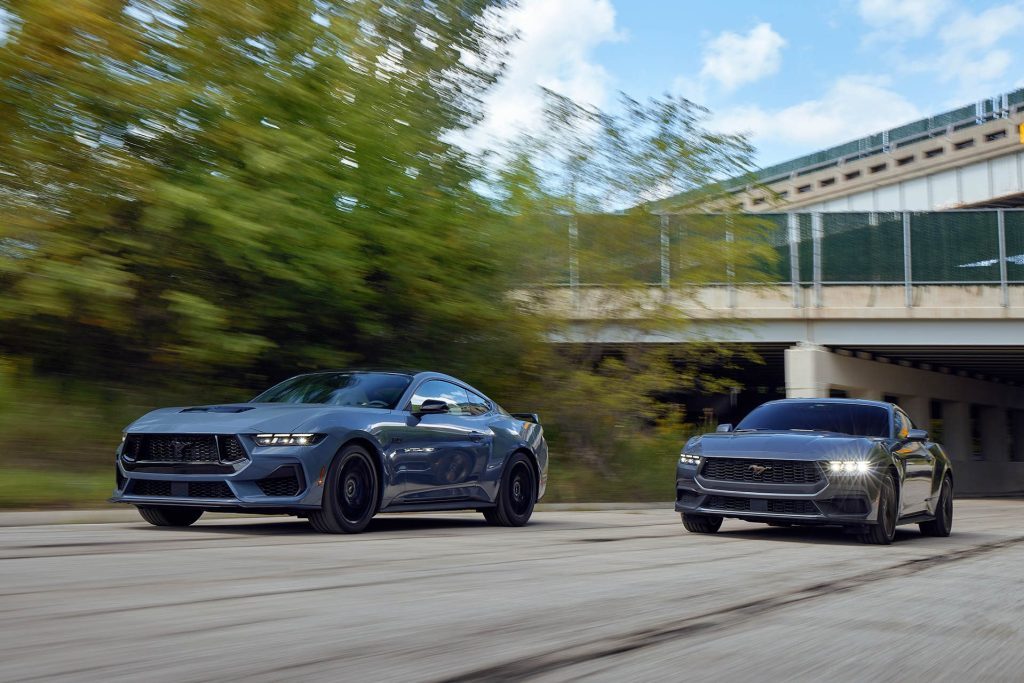
Underneath the car hasn’t changed much, this new Mustang is based on the old car, so the proportions and size are similar, though the sheet metal they tell us is all new. The front and rear ends are fresh, the grille shape influenced by the original Mustang. The tri-bar light theme is now seen front and rear, the new car with a more distinctive DRL signature in the headlamps. The GT model and the 2.3 are now more visually differentiated, each with a unique front facia and grille. The GT gets a gloss black front end, the outboard vents larger, the grille with a set of functional nostrils that feed the new dual air box arrangement on the V8, and it gets a functional hood vent. In profile the belt line is lower, for a less wedged look and more muscle in those rear haunches. The rear too has been thoroughly reworked, yet still unmistakably Mustang.
Inside is where the most change has occurred. The double brow dash has been binned along with all the retro themes, replaced by a tech onslaught led by an expanse of screens. In front of the driver is a 12.4-inch digital cluster while the centre touchscreen is 13.2-inches, both covered with the same piece of glass. There’s a broader scoop for customisation of the look and function of the displays, the digital dash now with a Fox theme too, bringing up old school dials lifted straight from the old 80s ‘stang. Most of the buttons have been nixed, interior functions controlled via the screen, which has allowed them to free up space for more storage (there’s a place for a charge pad under the centre stack for instance). There are six buttons on the console for a few ventilation functions and one to kill the idle/stop function.
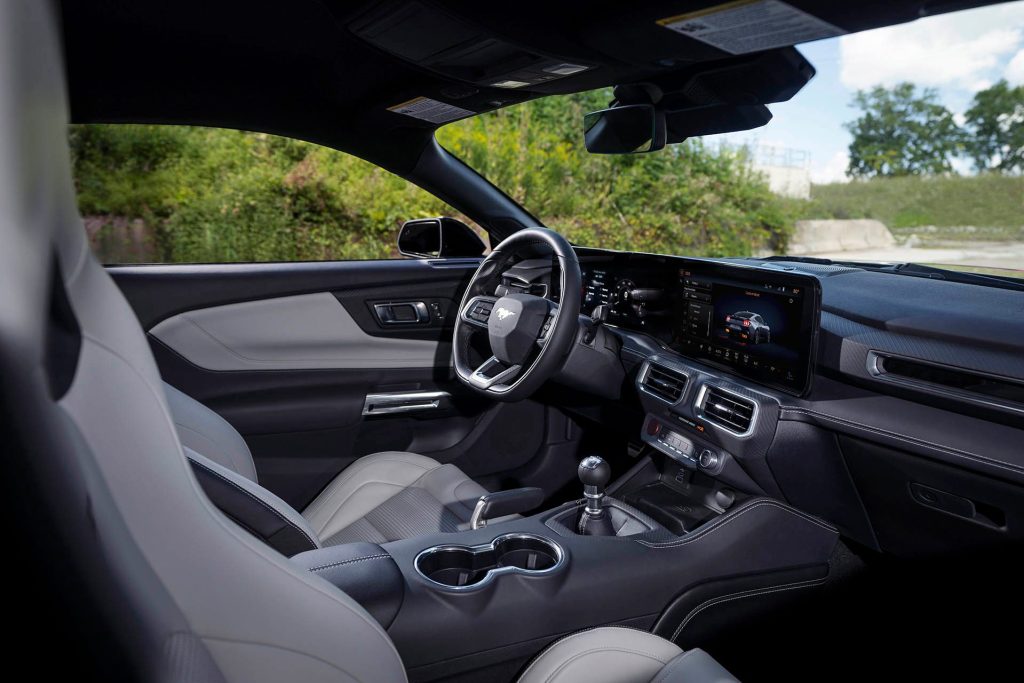
There is a new steering wheel, still with a three spoke, dished design but one that is less retro and more tech-friendly with fewer buttons. Thankfully a couple of those buttons are labelled Mode to allow the driver to more easily toggle through the drive modes. You’ll note the interior has an actual hand brake, although it operates an electrically-controlled, hydraulically-actuated brake that was designed with drifting in mind. That’s refreshingly un P.C, and reminds us the Mustang is still a hoon at heart. It was developed with input from drift king/master showman Vaughn Gittin Jr. It’s only available on cars fitted with the Performance Pack, and works only in Track mode.
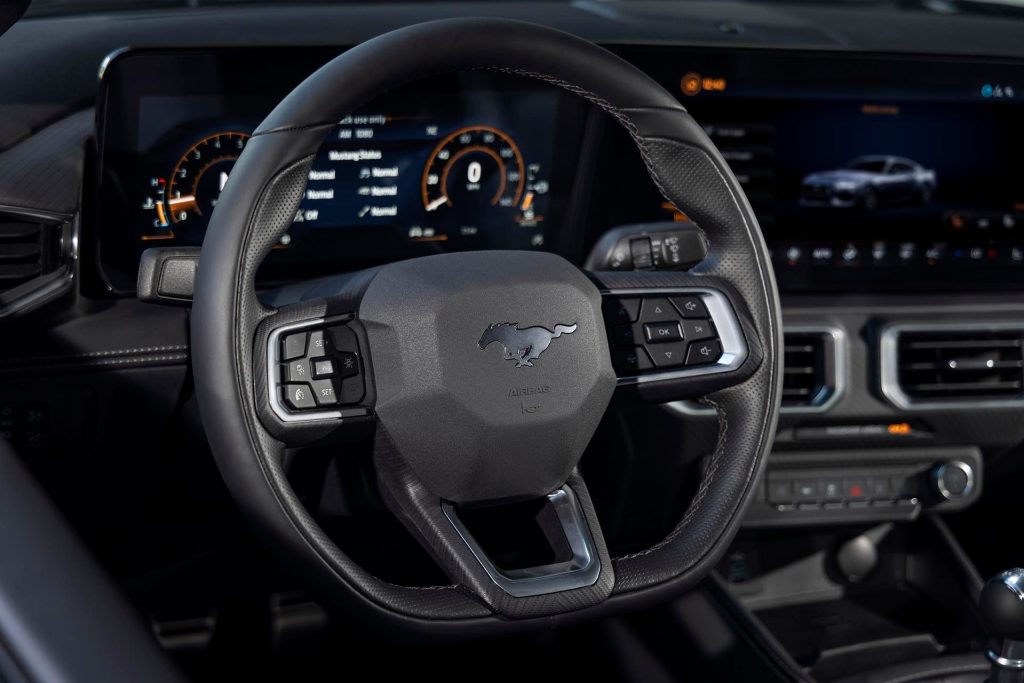
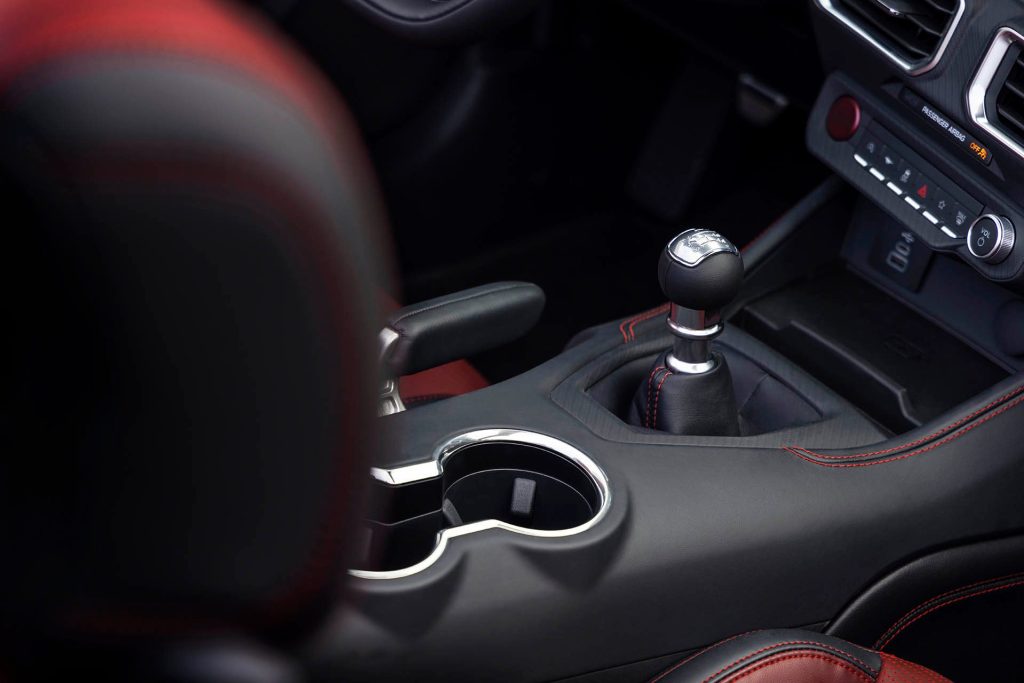
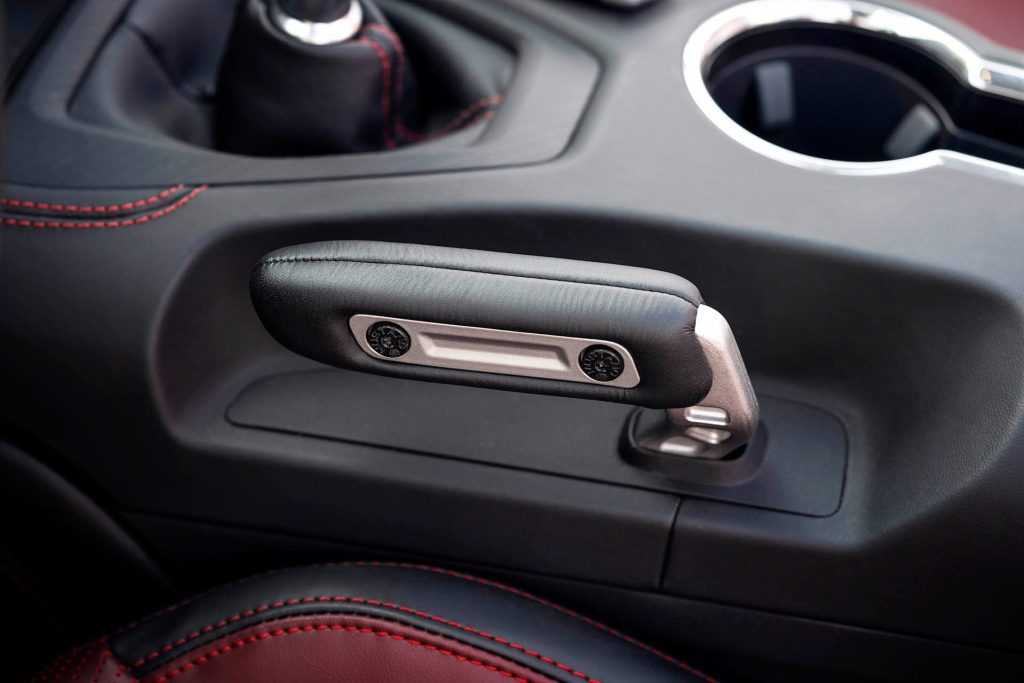
As mentioned, the new car is based on the old one, the suspension largely carrying over too, though they have changed a few linkages and knuckles and revised a few settings. It should be a sharper steer however with a new steering rack in place. This has a faster ratio and a stiffer cross beam to make for more precise inputs and quicker steering responses.
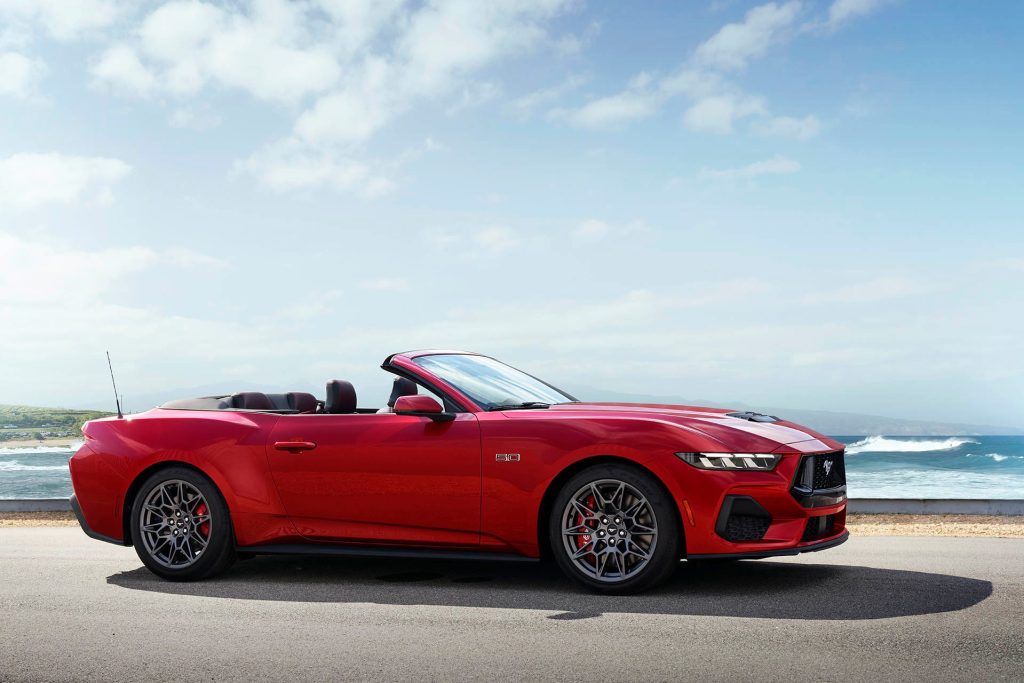
The new shape is said to be more aero efficient thanks to a reduction in drag (new underbody panelling probably the main contributor) yet it also produces more downforce on the rear, where the traction is. The brake package is improved with slightly larger rotors and six pot calipers (now featuring the pony logo) and four pot rears. The active exhaust returns, and they say they have used some digital noise cancelling to help improve the sound of the pipes by filtering out the unwanted sounds to help amplify the good ones. Want to show off that awesome fossil-fuelled fury? The remote start function from the key fob now allows you to rev the car when it’s sitting there idling…
They say the weight is similar to the old car so they should be a little quicker given both the 2.3 and 5.0 have been fettled. How much faster they are not saying as both engines are still going through the certification process, though Ford says both will be more powerful and fuel efficient. The V8 gets a new dual air box induction system, cam timing changes and a fresh exhaust manifold, and will be available with both the six-speed manual and a revised ten-speed auto. More work has gone into the 2.3 which now gets dual port and direct injection, an increased compression ratio and a new twin scroll turbocharger featuring an electronically controlled wastegate which should boost torque production, making it more competitive versus the V8. It comes only with the 10-speed auto.
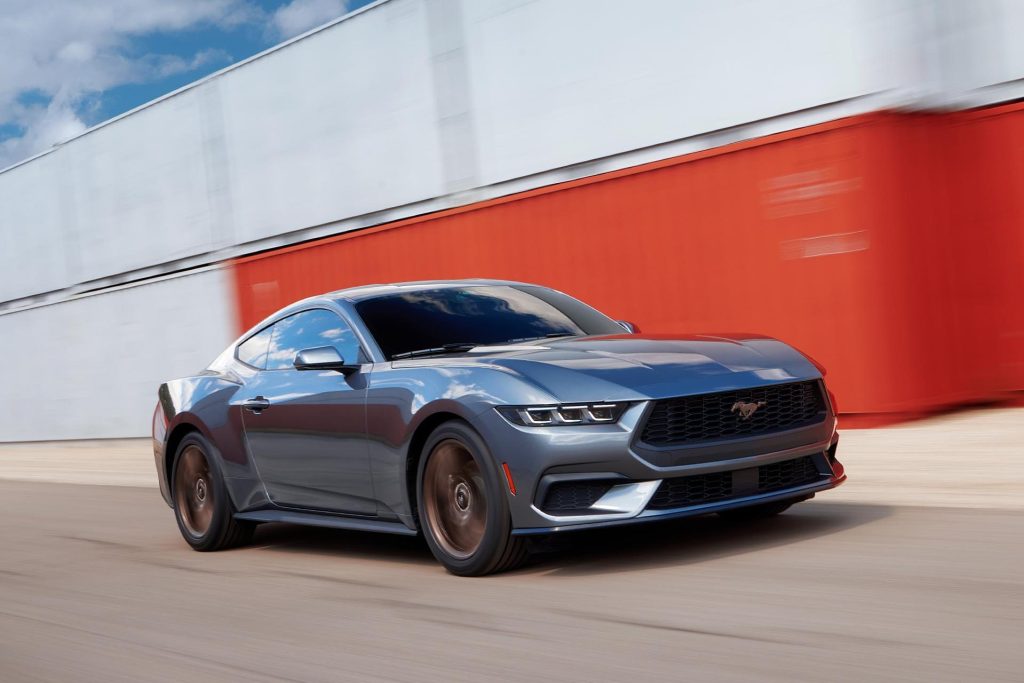
The new seventh generation Mustang goes on sale in the US in ‘Summer 2023’ and they are telling us it’ll be making its way to Aotearoa later next year.
You may also like…
While the new-for-2018 Mustang has a few more ponies under its hood, it's Ford's new 10-speed auto that's the talking...
Ford has added some hot sauce to its turbocharged Mustang, resulting in the high performance 2.3L fastback. Is it enough...

